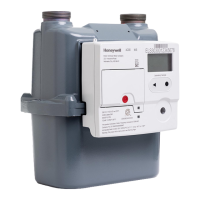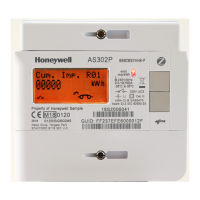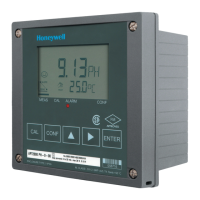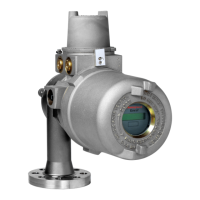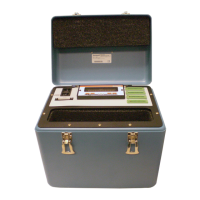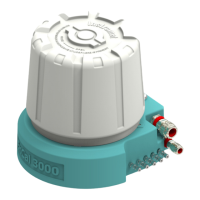39
3.6.
ACM 150 Operating Principle
3.6.1. Basic operation
The ACM 150 monitor can provide qualitative identification and quantitative analysis of the
chemicals in their gaseous state. Each time the ACM 150 monitor scans an air sample, it
collects multiple spectra of that sample, typically 4 or 2. The FTIR spectrometer takes
about 1.2 seconds to collect a single scan. The spectra collected for each air sample are
averaged, and the resulting spectrum is what the ACM 150 monitor uses to analyze the
air sample.
Except for the few chemicals not absorbing infrared radiation, every chemical's vapor
phase has a unique absorbance spectrum. An absorbance spectrum is a plot of
absorbance on the y-axis and wavenumber on the x-axis. Wavenumbers are expressed
as cm
-1
because the wavenumber is the inverse of wavelength in centimeters. These
spectra cover what is known as the mid-infrared or fingerprint region of the infrared
spectrum.
The air sample spectra collected by the ACM 150 monitor contain all the identifying
absorption peaks of the gases that make up that air sample. However, the ACM 150
monitor will only report the gases set up as active for that sample area.
3.6.2. Wavenumber precision
The wavelength location of any chemical’s absorbance peaks is fundamental and never
changes, being fixed by the molecule's quantum mechanics. The FTIR analyzer can
reproduce the exact wavenumber location for each gas.
3.6.3. Absorbance and gas concentration
Absorbance is the extent to which the intensity of a beam of infrared radiation is decreased
on passing through a sample of air in the ACM 150 monitor’s gas cell. Transmittance is
an expression of the intensity (or “radiant power”) of the beam of infrared radiation passing
through the same air sample. If no gases are present at a given wavenumber, the
transmittance is 1.0 or 100%, and the absorbance is 0. The relationship between
absorbance (A) and transmittance (T) is expressed as A = - log T Absorbance, as defined
by the Beer-Lambert Law, is directly proportional to the concentration of the absorbing
chemical (provided other vital variables are held constant), while transmittance is not
directly proportional. Therefore, absorbance is used to measure the concentration of
gases in the ACM 150 monitor’s air samples. Variables other than concentration that affect
absorbance are:
• Path length of the sample cell
• Resolution of the FTIR analyzer
• Temperature and pressure of the sample
• Non-linearity of the direct proportional relationship
• Characteristics of a particular FTIR analyzer and gas cell

